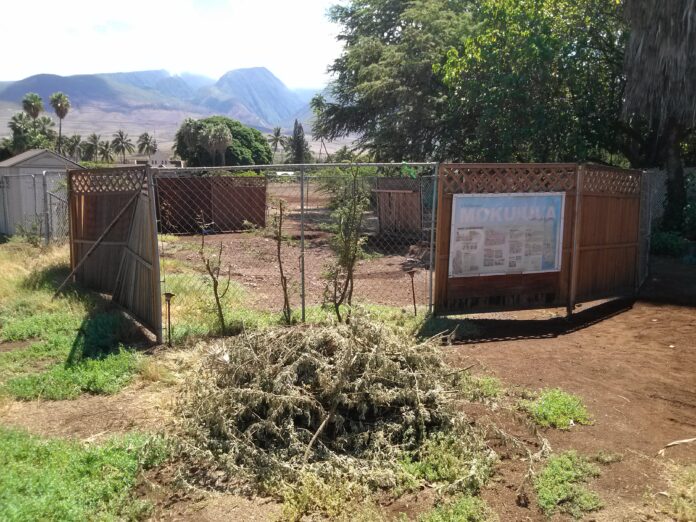In the aftermath of the devastating Maui wildfires that swept across Maui in early August, one Native Hawaiian landmark that’s been buried for a century is becoming a focal issue in the struggle to ensure the rebuilding efforts don’t forget Native Hawaiians.
Many are concerned the community, already under pressure, is going to be priced out of their own homeland as the restoration efforts get underway. At least symbolically, returning water to Moku‘ula could help do the opposite.
Mokuʻula was a tiny one-acre island in the middle of a freshwater fishpond or Loko iʻa, where the Hawaiian King Kamehameha III had his royal residence from 1837 to 1845. Mokuhinia, the pond Mokuʻula sat in, was the most prominent of Lahaina’s once-lush fishponds, canals and wetlands that gave the town the nickname ‘Venice of the Pacific.’
Mokuʻula is also a spiritual center, being where the goddess Kihawahine resides and several Hawaiian royals were buried.
But in the late 1800s, most of the water that fed Lahaina’s wetlands was redirected to irrigate the new 14,000-acre Pioneer Mill sugar plantation. Famines followed for Native Hawaiians who relied on Lahaina’s wetland farms for taro and fish.
Then, in 1919, the town buried Moku‘ula under a park. Now Mokuʻula rests under an abandoned baseball field in the dusty Malu‘ulu o Lele Park, a far cry from the verdant managed wetlands it once was.
Quoted in the Honolulu Magazine, the Native Hawaiian surf legend and ocean rescue expert Archie Kalepa has called for Moku‘ula’s restoration as the first part of restoring the community. “We have one chance to get this right; if we fail, we fail for the next five generations and beyond,” he told a gathering at the Maui Arts & Cultural Center on September 24th.
The Native Hawaiian educator and author Sydney Iaukea has also called for Moku‘ula to be restored, seeing it as a way to honor Lahaina’s connection to the land, rather than the oft-told extractive history of whaling, missionaries and sugarcane plantations.
Keʻeaumoku Kapu, a West Maui activist interviewed by the Honolulu Civil Beat feels “The government is steamrolling the process without consulting the community” in its rebuilding efforts.
“Lahaina was once considered the Venice of the Pacific. It was a living, viable place,” he said, emphasizing that listening to the demands to restore Moku‘ula would help make Lahaina that place again, instead of just another tourist town.
AsAmNews is published by the non-profit, Asian American Media Inc.
We are supported through donations and such charitable organizations as the Robert Wood Johnson Foundation. This holiday season, double your impact by making a tax-deductible donation to Asian American Media Inc and AsAmNews. Thanks to additional benefactors, all donations will now be matched up to a total of $17,000.
Please also follow us on Instagram, TikTok, Facebook, YouTube and X.


